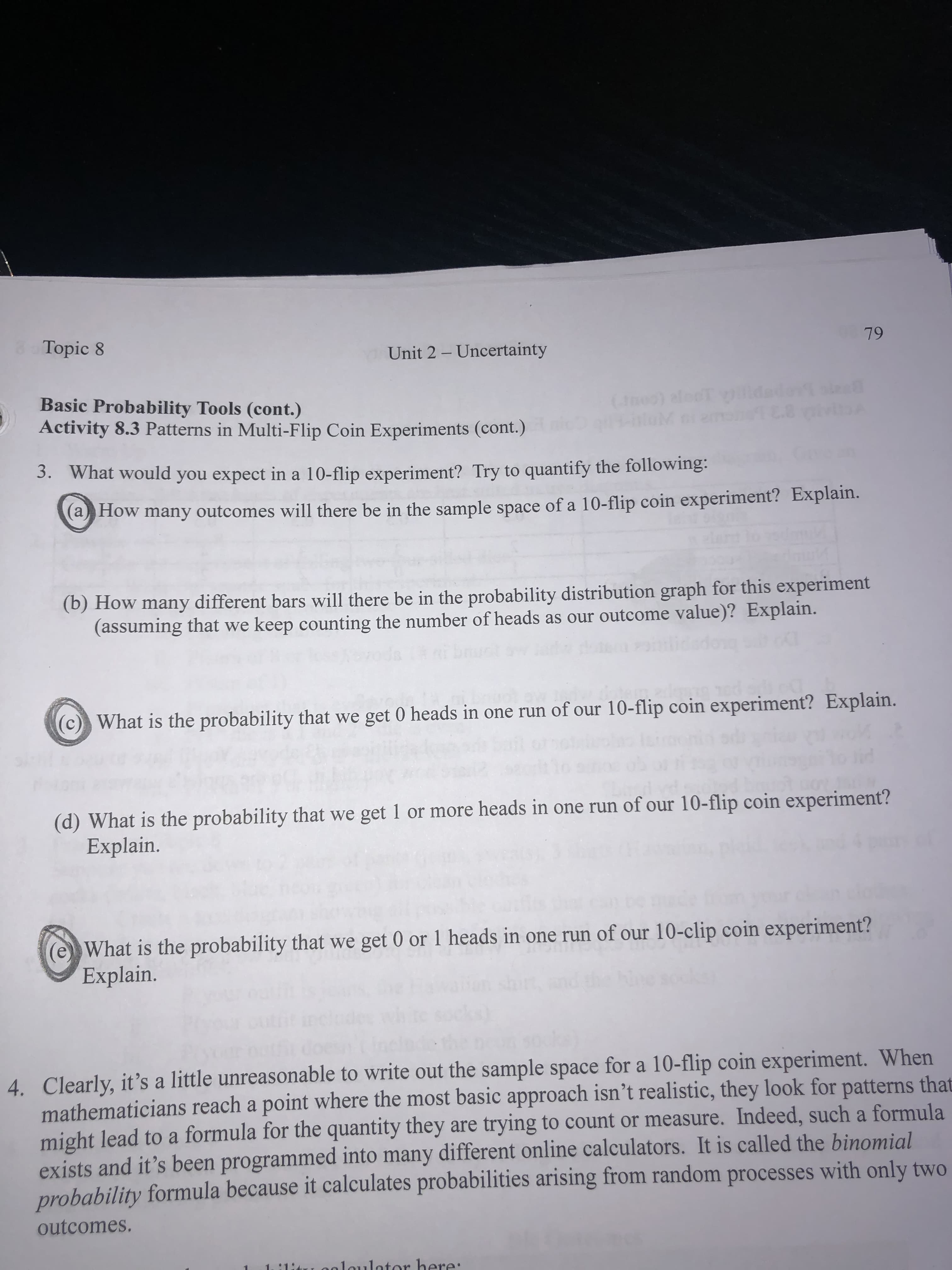Topic 8 79 Unit 2 - Uncertainty Basic Probability Tools (cont.) Activity 8.3 Patterns in Multi-Flip Coin Experiments (cont.) (oc) alod ulded 2 yI 3. What would you expect in a 10-flip experiment? Try to quantify the following (aHow many outcomes will there be in the sample space of a 10-flip coin experiment? Explain. (b) How many different bars will there be in the probability distribution graph for this experiment (assuming that we keep counting the number of heads as our outcome value)? Explain. (c) What is the probability that we get 0 heads in one run of our 10-flip coin experiment? Explain. (d) What Explain. the probability that we get 1 or more heads in one run of our 10-flip coin experiment? What is the probability that we get 0 or 1 heads in one run of our 10-clip coin experiment? Explain. 4. Clearly, it's a little unreasonable to write out the sample space for a 10-flip coin experiment. When mathematicians reach a point where the most basic approach isn't realistic, they look for patterns that might lead to a formula for the quantity they are trying to count or measure. Indeed, such a formula exists and it's been programmed into many different online calculators. It is called the binomial probability formula because it calculates probabilities arising from random processes with only two outcomes. :12t aoult r re:
Permutations and Combinations
If there are 5 dishes, they can be relished in any order at a time. In permutation, it should be in a particular order. In combination, the order does not matter. Take 3 letters a, b, and c. The possible ways of pairing any two letters are ab, bc, ac, ba, cb and ca. It is in a particular order. So, this can be called the permutation of a, b, and c. But if the order does not matter then ab is the same as ba. Similarly, bc is the same as cb and ac is the same as ca. Here the list has ab, bc, and ac alone. This can be called the combination of a, b, and c.
Counting Theory
The fundamental counting principle is a rule that is used to count the total number of possible outcomes in a given situation.
Its just the circled questions. Please help. Thanks in advance!!

Trending now
This is a popular solution!
Step by step
Solved in 5 steps with 3 images






